Front Wheel Hub, Bearing, and Seal Replacement Automatic Four Wheel Drive
Removal Procedure
Tools Required
- Drain two-thirds of the fluid from the brake reservoir.
- Raise the vehicle. Refer to
Lifting and Jacking the Vehicle
in General Information.
- Remove the tire and wheel assembly. Refer to
Tire and Wheel Removal and Installation
in Tires
and Wheels.
- Install a cover on the axle joint.
Notice: Support the caliper with a piece of wire to prevent damage to the brake
line.
- Remove the brake caliper. Refer to
Brake Caliper Replacement
in Disc Brakes.
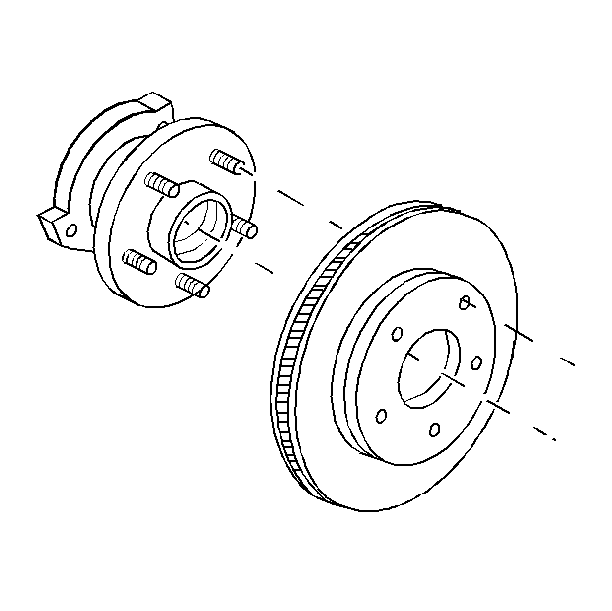
- Remove the brake rotor.
Refer to
Brake Rotor Replacement
in Disc Brakes.
- Disconnect the speed sensor electrical connector.
- Remove the speed sensor from the bearing. Refer to
Wheel Speed Sensor Replacement
in Antilock
Brake System.
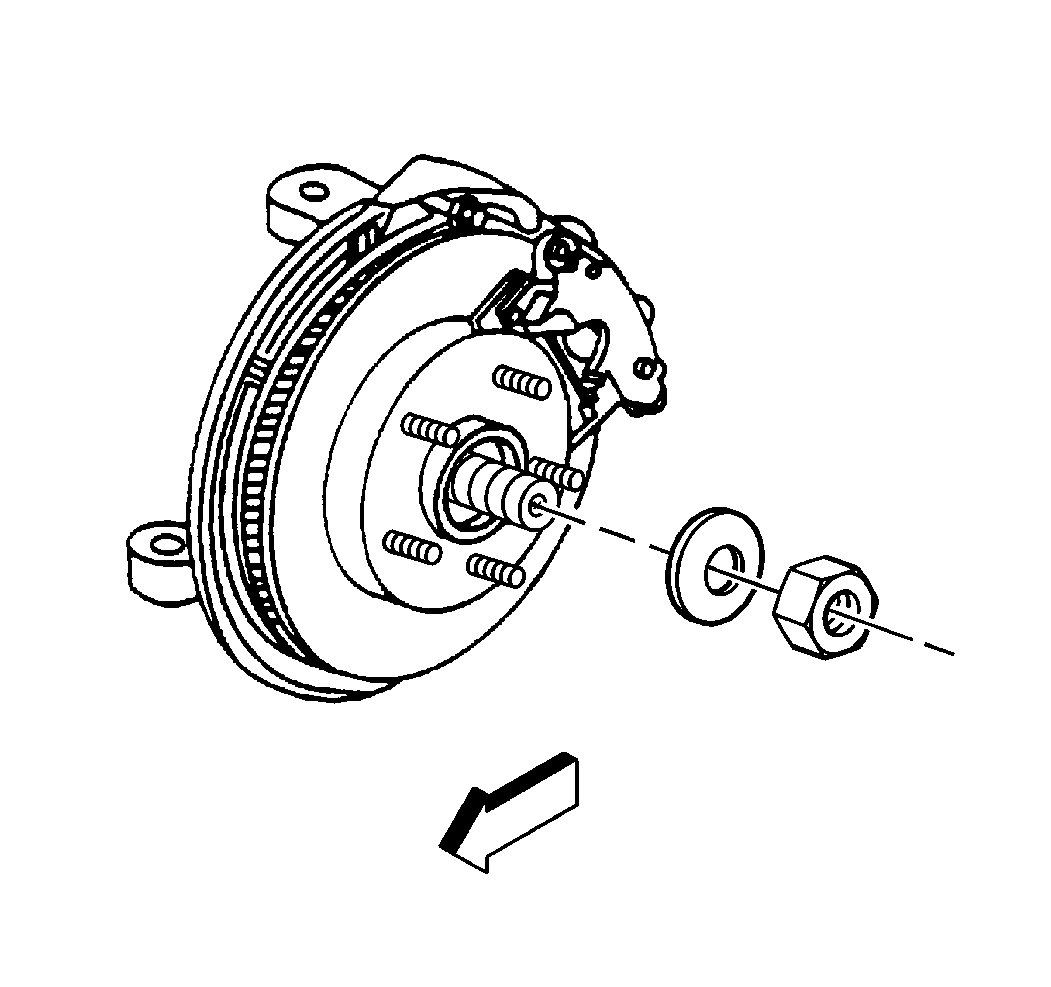
- Remove the drive axle
nut and the washer.
- Remove the tie rod end nut and disconnect the tie rod end from
the knuckle. Refer to
Tie Rod Replacement
in Steering Linkage.
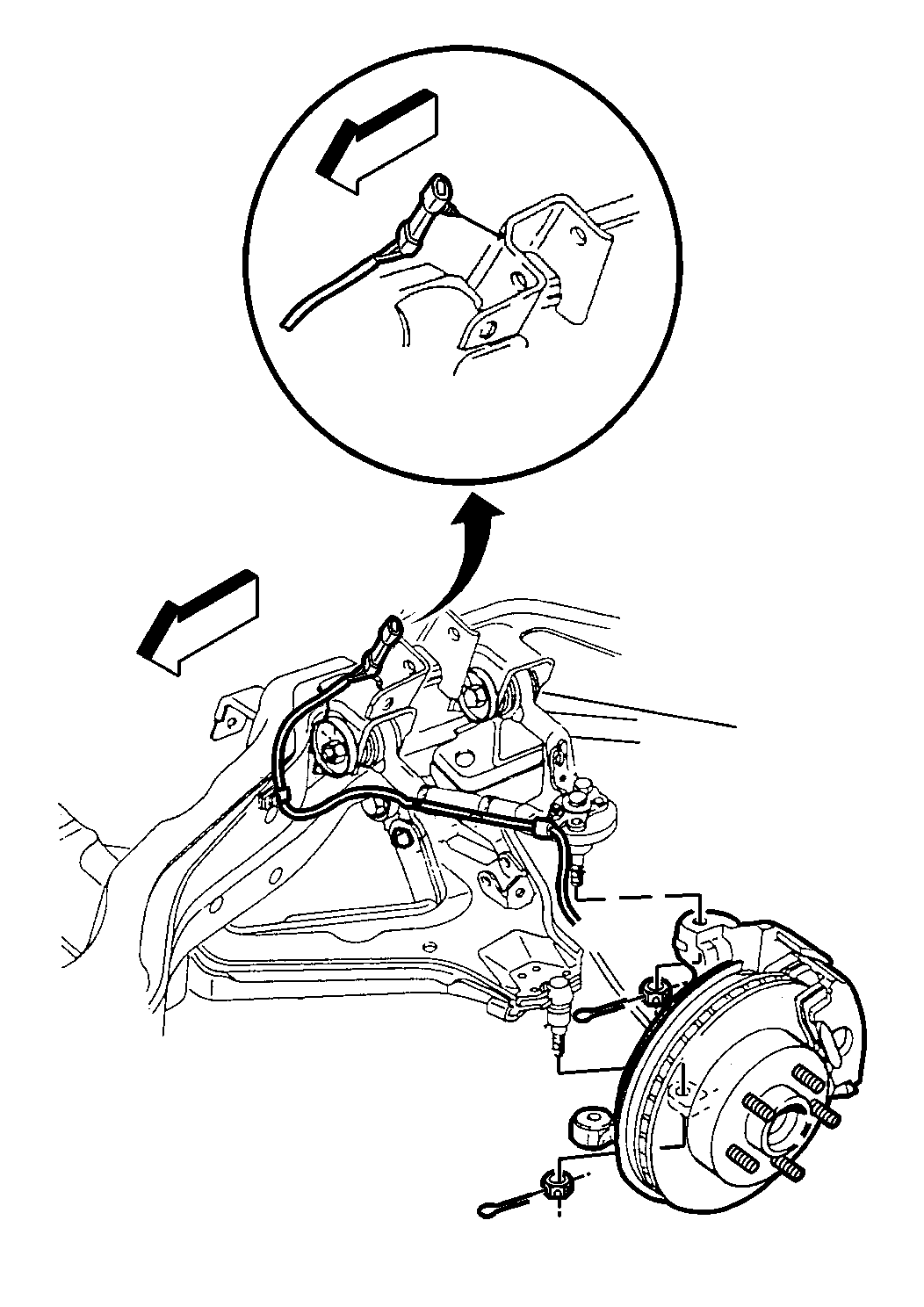
- Using a puller, remove
the hub and bearing assembly.
- Remove the drive axle. Refer to
Wheel Drive Shaft Replacement
in Wheel Drive Shafts.
- Remove the splash shield bolts.
- Remove the splash shield.
- Support the lower control arm with a jack stand.
- Remove the upper ball joint nut.
- Disconnect the upper ball joint from the knuckle using the J 36607
. Refer to
Upper Control Arm Ball Joint Replacement
.
- Remove the lower ball joint nut.
- Disconnect the lower ball joint from the knuckle using the J 35917
. Refer to
Lower Control Arm Ball Joint Replacement
.
- Remove the knuckle.
- Remove the seal from the knuckle.
Installation Procedure
- Install the seal into the knuckle using the J 36605
.

- Connect the knuckle to
the upper and lower ball joints.
- Install the lower ball joint to steering knuckle nut.
Notice: Use the correct fastener in the correct location. Replacement fasteners
must be the correct part number for that application. Fasteners requiring
replacement or fasteners requiring the use of thread locking compound or sealant
are identified in the service procedure. Do not use paints, lubricants, or
corrosion inhibitors on fasteners or fastener joint surfaces unless specified.
These coatings affect fastener torque and joint clamping force and may damage
the fastener. Use the correct tightening sequence and specifications when
installing fasteners in order to avoid damage to parts and systems.
- Install the upper
ball joint to steering knuckle nut.
Tighten
| • | Tighten the lower nut to 128 N·m (95 lb ft). |
| • | Tighten the upper nut to 98 N·m (72 lb ft). |
- Install the new cotter pins. Tighten the nuts up to an additional 1/6
amount in order to insert the cotter pin through the upper and lower ball
joint studs. Bend the cotter pin ends flat against the nut.
- Install the splash shield. Make sure to properly align the splash
shield.
- Install the splash shield bolts.
Tighten
Tighten the bolts to 16 N·m (12 lb ft).
- Install the drive axle. Refer to
Wheel Drive Shaft Replacement
in Wheel Drive Shafts.
- Install the hub and bearing assembly. Align the threaded holes.
- Install the bolts.
Tighten
Tighten the bolts to 90 N·m (66 lb ft).

- Install the drive axle
washer and the nut.
Tighten
Tighten the nut to 200 N·m (147 lb ft).
- Install the outer tie rod. Refer to
Tie Rod Replacement
in Steering Linkage.
- Install the speed sensor to the bearing. Refer to
Wheel Speed Sensor Replacement
in Antilock Brake System.
- Connect the speed sensor electrical connector.

- Install the brake rotor.
Refer to
Brake Rotor Replacement
in Disc Brakes.
- Install the brake caliper. Refer to
Brake Caliper Replacement
in Disc Brakes.
- Remove the axle joint cover.
- Install the tire and wheel assembly. Refer to
Tire and Wheel Removal and Installation
in Tires
and Wheels.
- Lower the vehicle.
- Check the master cylinder fluid level. Add fluid if needed. Refer
to
Master Cylinder Reservoir Filling
in Hydraulic Brakes.
Important: Before moving the vehicle, pump the brake pedal until it is firm. Check
the brake fluid level in the master cylinder after pumping the brakes.
- Check the front wheel alignment. Refer to
Wheel Alignment Measurement
in Wheel Alignment.
- Check the vehicle trim height. Refer to
Trim Height Inspection
in Suspension General
Diagnosis.
Front Wheel Hub, Bearing, and Seal Replacement Rear Wheel Drive
Removal Procedure
Tools Required
J 29117-A Front Outer
Race Remover
- Raise the vehicle. Refer to
Lifting and Jacking the Vehicle
in General Information.
- Remove the tire and wheel assembly. Refer to
Tire and Wheel Removal and Installation
in Tires
and Wheels.
- Remove the brake caliper. Refer to
Brake Caliper Replacement
in Disc Brakes.
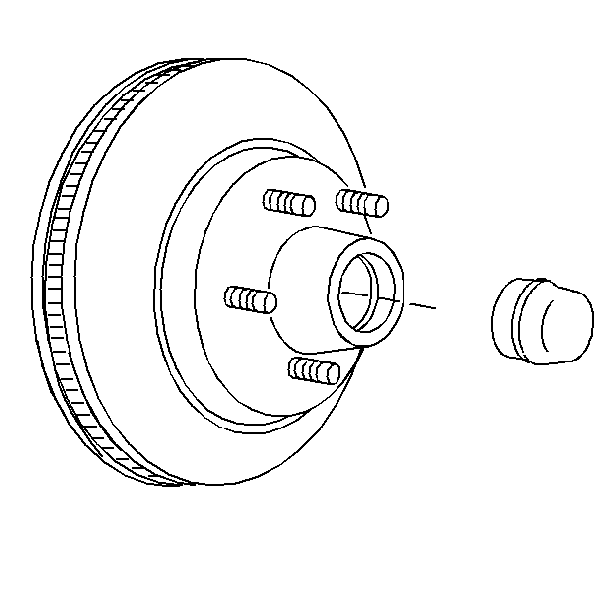
- Remove the dust cap from the rotor/hub.
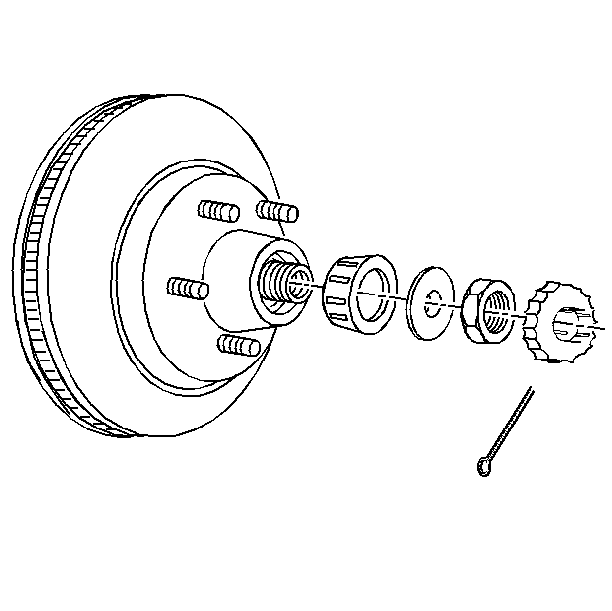
- Remove the cotter pin,
the hub nut, the washer, and the outer wheel bearing.
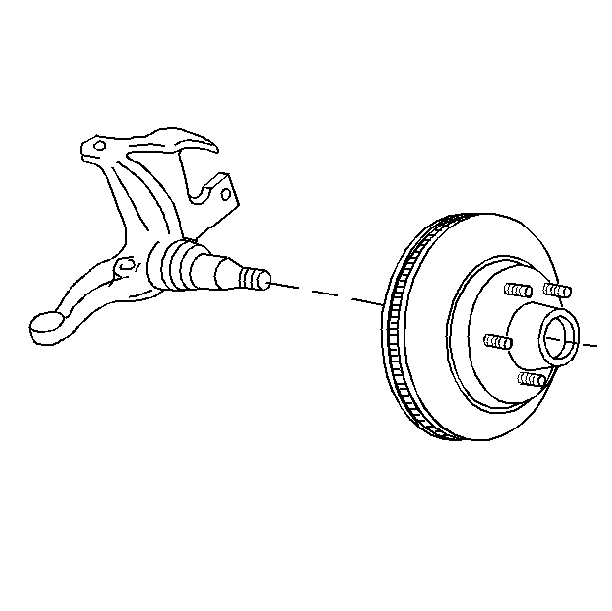
- Remove the rotor/hub.
| • | Do not damage the spindle threads. |
| • | The inner wheel bearing will remain inside the rotor. |
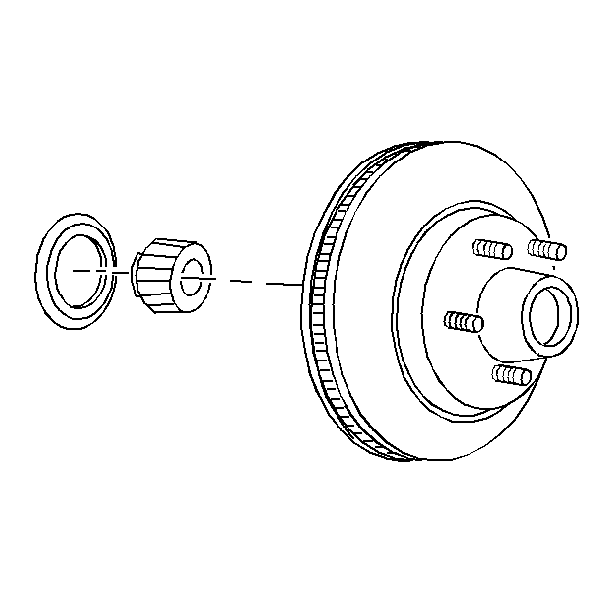
- Remove the inner wheel bearing seal.
| 7.1. | Pry out the seal and discard. |
| 7.2. | Remove the inner wheel bearing from the rotor/hub. |
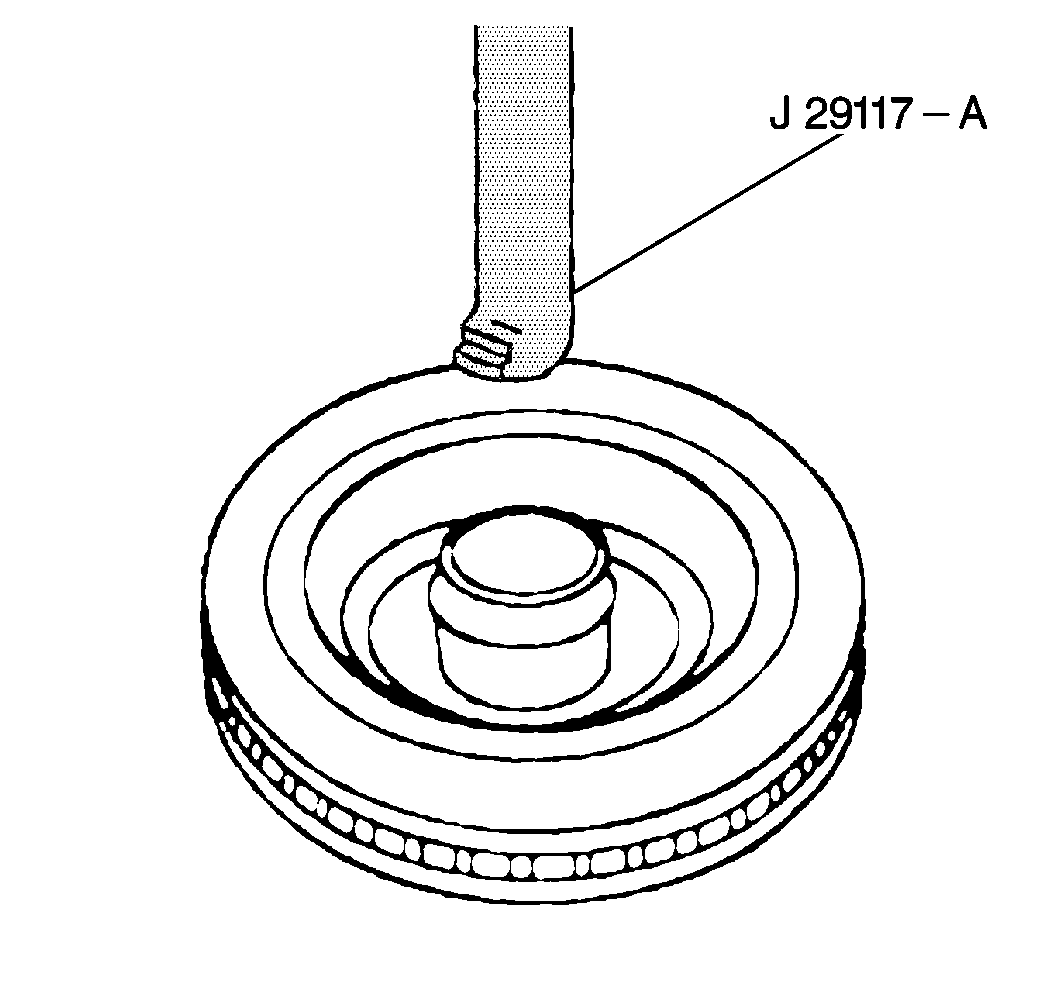
- Remove the inner and
the outer bearing races using the J 29117-A
.
Notice: Do not spin the wheel bearings with compressed air to dry them-the
wheel bearings may be damaged.
- Clean any grease from the rotor/hub, the spindle, and the wheel bearings
using clean solvent and a small brush with no loose bristles.
- Inspect the rotor/hub. Refer to
Brake Rotor Thickness Variation Check
or
Brake Rotor Lateral Runout Check
or
Brake Rotor Tolerance
in Disc Brakes.
- Check the wheel bearings and the races for damage or wear. Refer
to
Wheel Bearings Diagnosis
in
Suspension General Diagnosis.
Installation Procedure
- Using a brass drift, install the bearing races into the rotor/hub.
Important:
| • | Do not mix the greases. Mixing may change the properties of each
grease used, resulting in poor performance. |
- Apply a thin film of grease to the spindle at the outer and the inner
wheel bearing seat, the shoulder, and the seal seat.
- Apply a small quantity of grease inboard of each wheel bearing
cup inside the rotor/hub.
Notice: Failure to completely pack the wheel bearing (cones, rollers, and cage)
with grease will result in premature wheel bearing damage and/or wear.
- Fill the wheel bearing, cone and roller assemblies, full of grease.
| • | Use a cone-type grease packer that forces grease into the bearing. |
| • | If a cone-type grease packer is not available, pack the wheel
bearings by hand. |
| • | If the wheel bearings are packed by hand, work the grease into
the bearings between the rollers, the cones, and the cage. |
- Install the inner wheel bearing into the rotor/hub. Apply an additional
quantity of grease outboard of this wheel bearing.
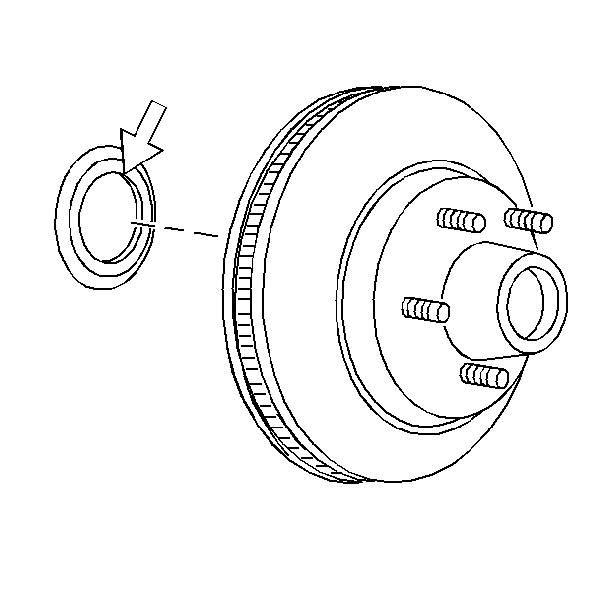
- Install a new seal.
| 6.1. | Use a flat-surfaced tool in order to install the seal so that
the seal is flush with the rotor/hub flange. |
| 6.2. | Lubricate the seal lip with a thin layer of grease. |

- Install the rotor/hub. Do not damage the spindle threads.

- Install the outer wheel
bearing. Press on the spindle until the wheel bearing fully seats against
the rotor/hub outer bearing.
Notice: Use the correct fastener in the correct location. Replacement fasteners
must be the correct part number for that application. Fasteners requiring
replacement or fasteners requiring the use of thread locking compound or sealant
are identified in the service procedure. Do not use paints, lubricants, or
corrosion inhibitors on fasteners or fastener joint surfaces unless specified.
These coatings affect fastener torque and joint clamping force and may damage
the fastener. Use the correct tightening sequence and specifications when
installing fasteners in order to avoid damage to parts and systems.
- Install the washer
and the nut.
Tighten
Tighten the rotor/hub nut to 16 N·m (12 lb ft),
while turning the wheel assembly forward.
- Apply an additional quantity of grease outboard of the wheel bearing.
- Adjust the wheel bearings. Refer to
Wheel Bearing Adjustment
.
- Install the cotter pin.

- Install the cap on the rotor/hub.
- Install the brake caliper. Refer to
Brake Caliper Replacement
in Disc Brakes.
- Install the tire and wheel assembly. Refer to
Tire and Wheel Removal and Installation
in Tires
and Wheels.
- Lower the vehicle.















